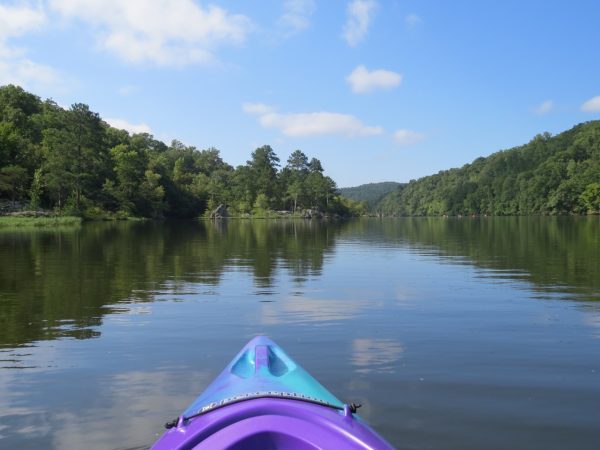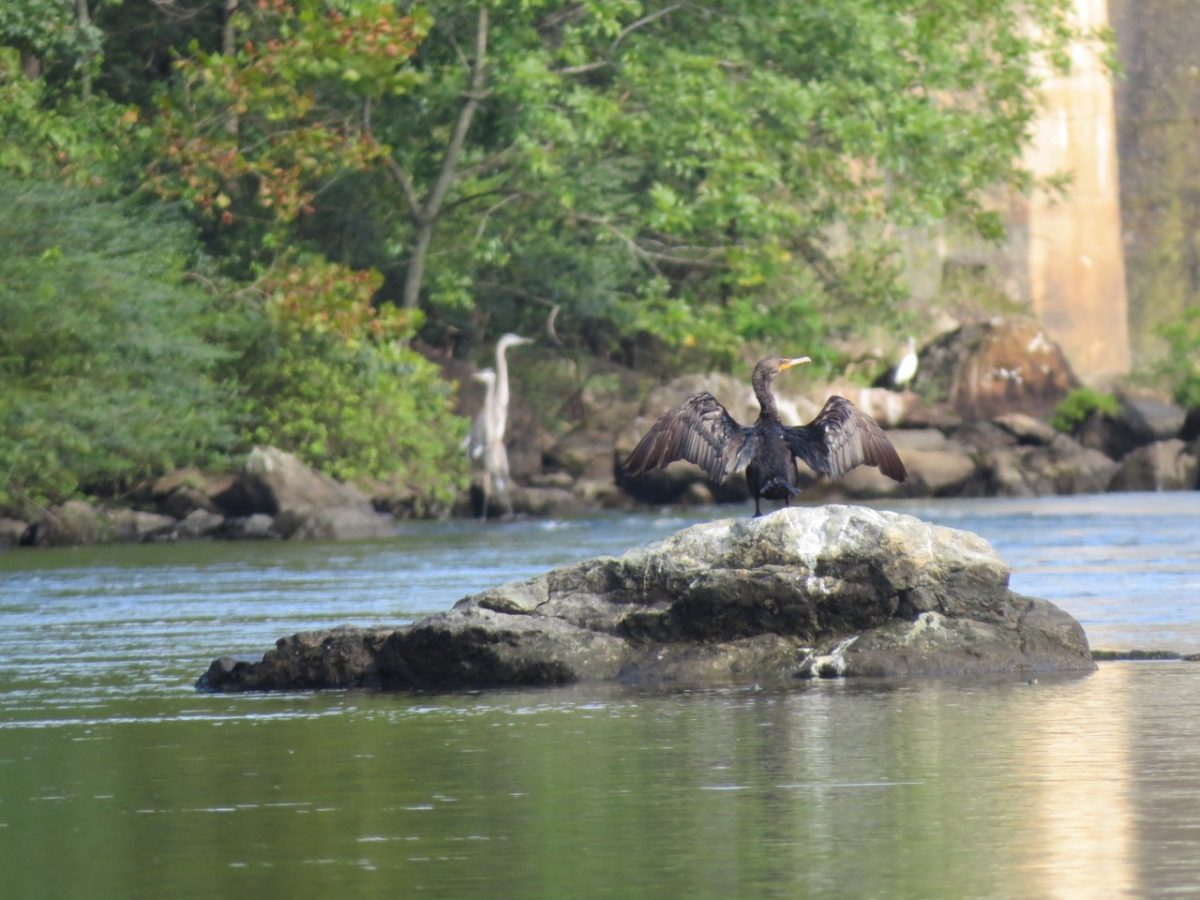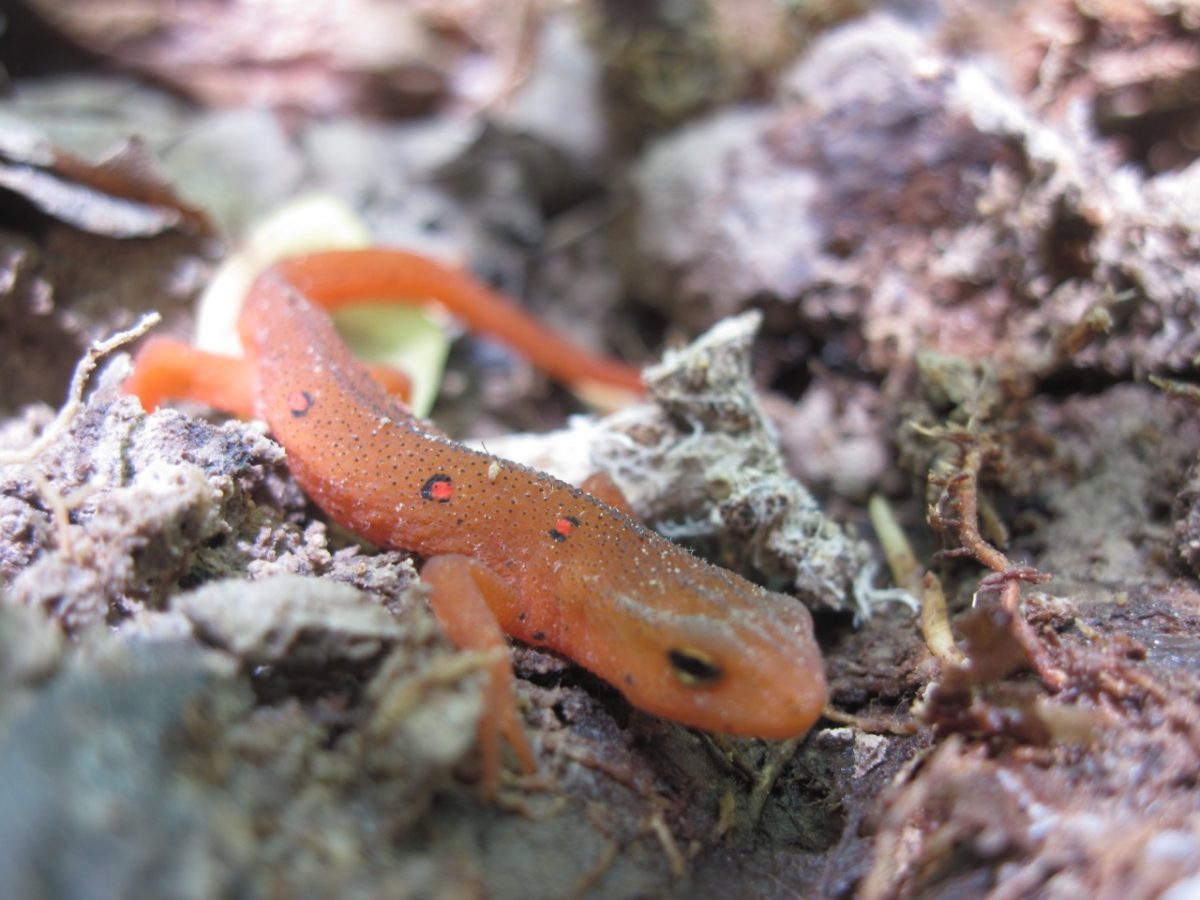Beyond Crowders and Morrow Mountain: 8 great spots to get your nature fix near Charlotte

Most people who visit the Uwharrie region for recreation probably know about spots like the Uwharrie Trail and Morrow Mountain State Park. Or maybe you’re used to driving west, to Crowders Mountain State Park. However, there are a lot of lesser-known gems in the region that many tourists miss out on, and some that even locals have never been to see.
Charlotte is surrounded by opportunities to enjoy nature, many of which have been preserved through the efforts of land trusts, state and national agencies and forward-thinking owners. Here’s a list of eight such sites that you should check out next time you’re in the Uwharrie region if you want to diversify your hiking resume and skip the same old spots:
- The Badin Upland Pools, found on the Uwharrie National Forest in the Badin Recreation Area. The upland pools are atop a mountain near the end of Moccasin Creek Road, deep in the Badin Recreational Area. Drive almost to the end of the road, and you’ll see Alcoa posted signs on the right and a hill going up to the left. There’s just enough room to park on the side of the road. From there, hike straight up to the top of the mountain, and listen for the frogs in springtime to direct you to the pools. In early May, thousands of atamasco lilies can be found in bloom in this spot. These large pools, some an acre or better in size, harbor rich biodiversity and are a significant spot for amphibian breeding. Not far from here also is an area known as Nifty Rocks, with some large rock outcrops more than 30 feet high.
 The Nifty Rocks boulder area near the Badin Upland Pools. Photo: Crystal Cockman.
The Nifty Rocks boulder area near the Badin Upland Pools. Photo: Crystal Cockman.
- Daniels Mountain Montane Longleaf Pine Forest in the Uwharrie National Forest in the Badin Recreational Area. From the Eldorado Outpost on NC 109, head south. Take the first right onto Reservation Road. Take the next right onto Moccasin Creek (US Forest Service Road 576). Take the first left onto US Forest Service Road 555, Cotton Place Road. After about 1 mile, the Cotton Place trailhead will be on your right. Starting from the Cotton Place trailhead, be sure to take the hiking trail (not the OHV trail, which is steeper) – this trail is not marked so you’ll have to look for it. Proceed up the trail approximately three quarters of a mile to reach the montane longleaf pine habitat. A walking stick or trekking poles are recommended, as it’s steep. This is a really unique site – longleaf pine mixed with chestnut oak and rocky outcrops with a Uwharrie Mountain backdrop.
- Arnett Branch Longleaf, owned by the North Carolina Zoo. This 113-acre property is the largest old growth Piedmont longleaf pine forest in North Carolina. Some trees on the site are more than 300 years old. Many of them have been “boxed” for turpentine and still bear the “catface” scars where the tree was scraped to encourage the sap to flow. Piedmont longleaf differ from Sandhills and Coastal Plain longleaf in that they grow in clay soils instead of sand. They also have a suite of native grasses in the understory, including big blue stem, indian grass, purple top, switch grass, and more. This site is only accessible through permission from the NC Zoo.
- Ridges Mountain owned by the North Carolina Zoo. This site is located off Highway 64 off Ridges Mountain Trail, near Asheboro. This is another mountain with upland pools that are important for salamanders and other amphibians. There’s a 1.5 mile hiking trail to the top and once you get there you will be able to see large boulders, some more than 50 feet high. This site is also accessible only by permission from the NC Zoo.
 A salamander at the Birkheard Mountain area. Photo: Crystal Cockman.
A salamander at the Birkheard Mountain area. Photo: Crystal Cockman. - Birkhead Property on High Pine Church Road, owned by the Wildlife Resources Commission. This property was initially bought by Three Rivers Land Trust and transferred to WRC just a few years ago. The site was just weeks away from becoming a 40-home subdivision before the land trust acquired it. A 60-foot-wide road had already been cut into the property, which is now covered in native grasses. You can hike in on a trail passing through a mature hardwood forest and by a globally rare hillside seepage bog, and connect to the Birkhead Wilderness Area and the Camp 3 loop trail. This site provides the only eastern access to the Birkhead Wilderness Area.
- Capel Property on Dennis Road, owned by the Wildlife Resources Commission. This site was also bought by Three Rivers Land Trust and transferred to WRC. The property possesses frontage on the Uwharrie River and Hidden Lake, and there’s a put-in or take-out spot on the site. That means you can paddle the Uwharrie River from Highway 109 without having to go all the way to Morrow Mountain State Park to take out. The property itself has over 50 acres of grasslands that are kept open by burning, and one field is lush with atamasco lilies and jack-in-the-pulpits in springtime. There’s even a small waterfall on Dutchman’s Creek. This is a great site for deer and turkey hunting.
- Suther Prairie in Cabarrus County, owned by the North Carolina Plant Conservation Program. This is the only known remaining natural wet weather prairie in North Carolina. Over 200 species of plants are known to the site, including the rare Canada Lily. In springtime, the field is full of atamasco lilies and indian paintbrush. The property was bought by Cabarrus Soil and Water Conservation District with help from Three Rivers Land Trust and funded through the Clean Water Management Trust Fund, then transferred to the NC Plant Conservation Program who owns and manages the property now. This site is accessible only through guided hikes and workdays through the Friends of Plant Conservation (ncplantfriends.org).
- The Narrows or Falls Reservoir, a small lake in between Badin Lake and Lake Tillery. This is my absolute favorite place to paddle. Not well known, there’s never much traffic on this lake and there are beautiful rock outcrops and a waterfall found on the lake. The Badin Dam and related buildings sit on the northern end of the lake and they are listed on the National Register of Historic Places. This is also one of only a couple spots where the rare Yadkin River Goldenrod exists, which can be found blooming here in October.
Next time you are in the area, consider stopping by one of these undiscovered treasured places and enjoy what makes the Uwharrie region so unique.
Crystal Cockman is Director of Conservation at the Three Rivers Land Trust.

A bird in the Falls Reservoir area. Photo: Crystal Cockman.
 The Nifty Rocks boulder area near the Badin Upland Pools. Photo: Crystal Cockman.
The Nifty Rocks boulder area near the Badin Upland Pools. Photo: Crystal Cockman.
 A salamander at the Birkheard Mountain area. Photo: Crystal Cockman.
A salamander at the Birkheard Mountain area. Photo: Crystal Cockman.